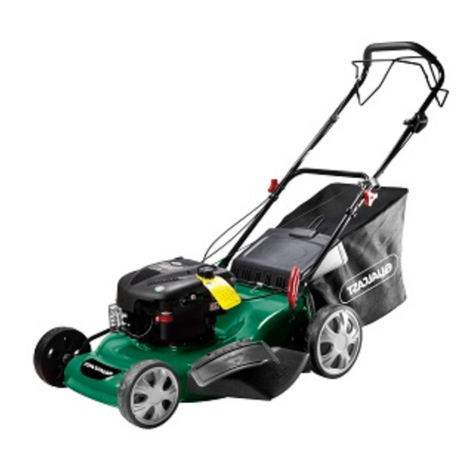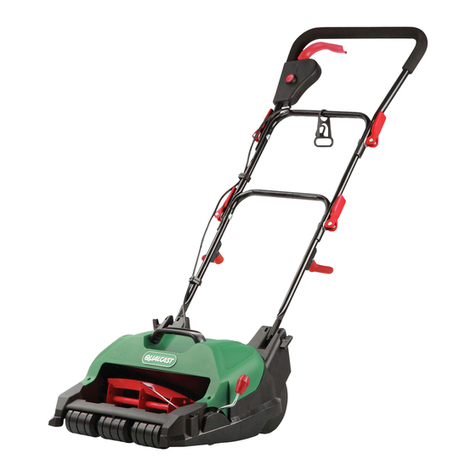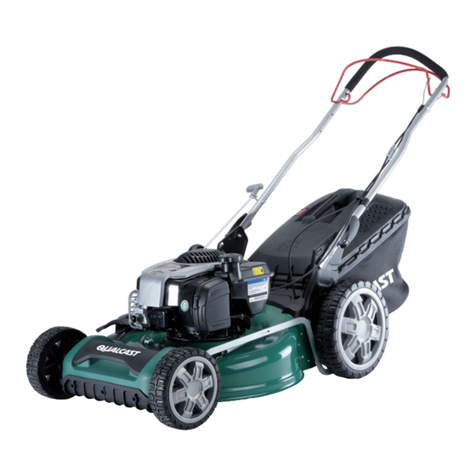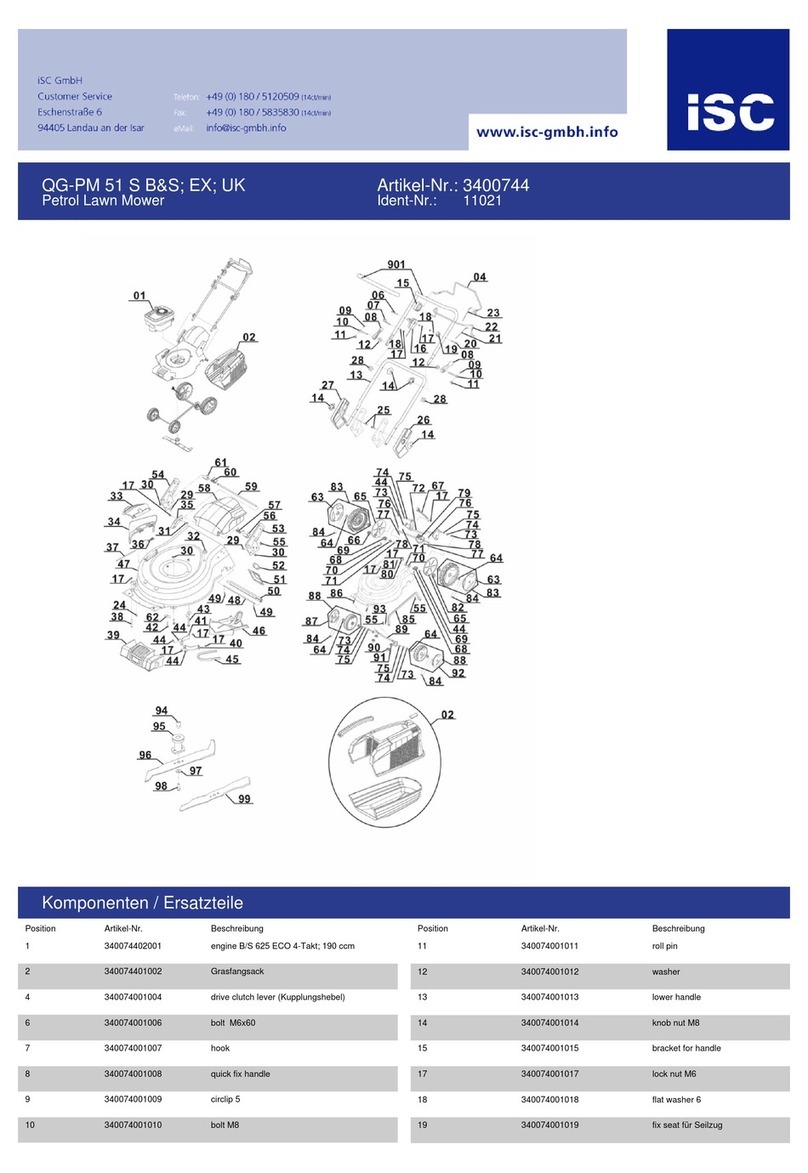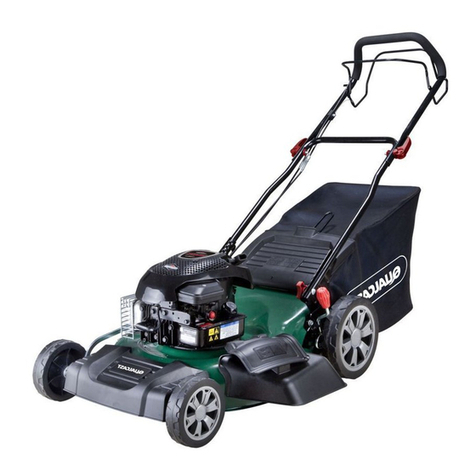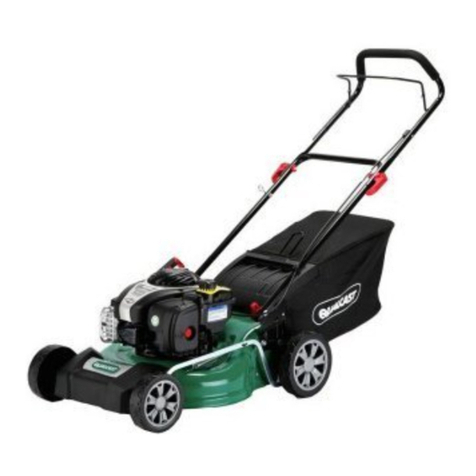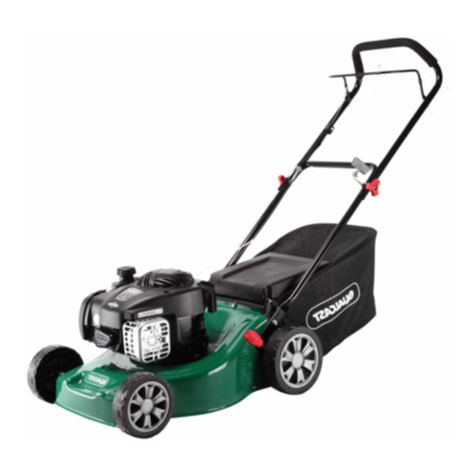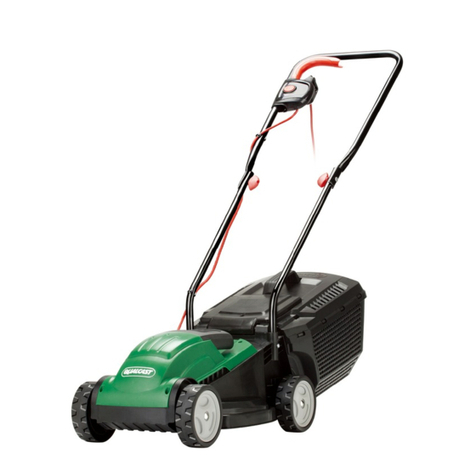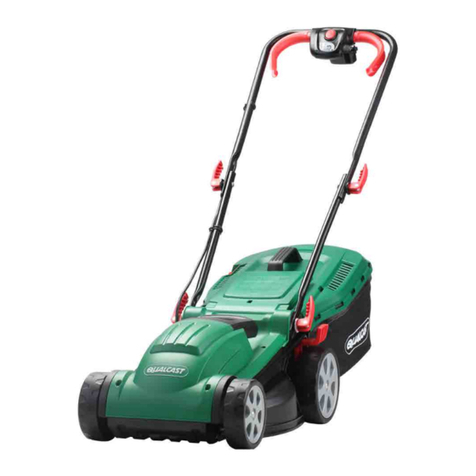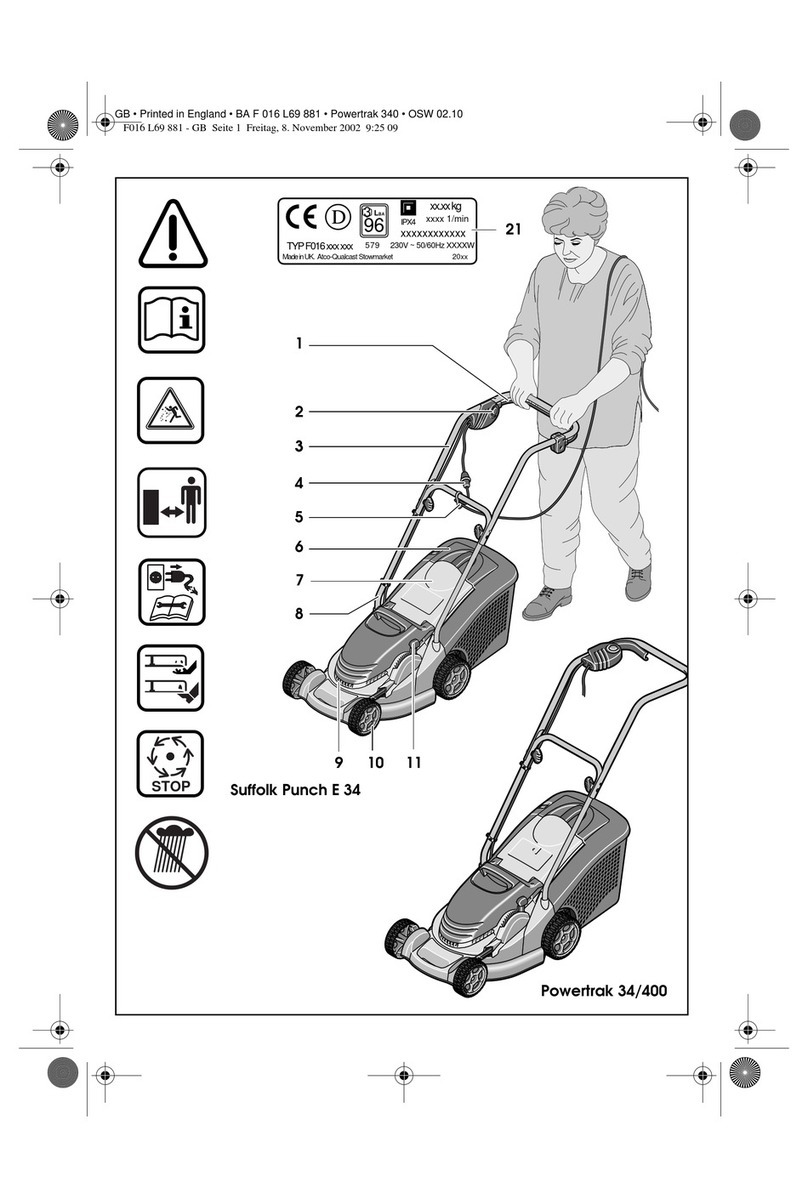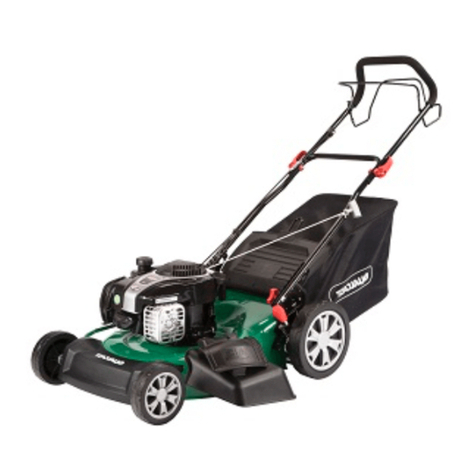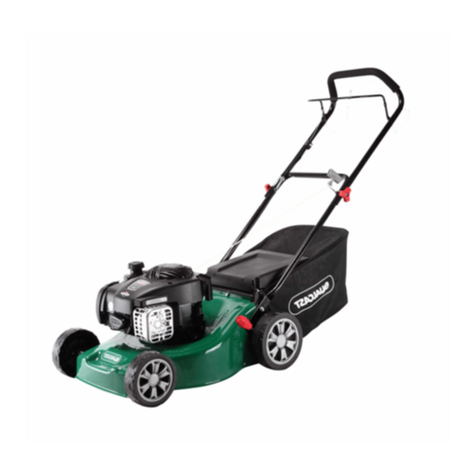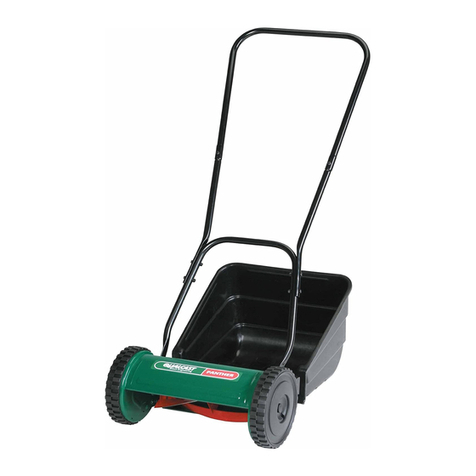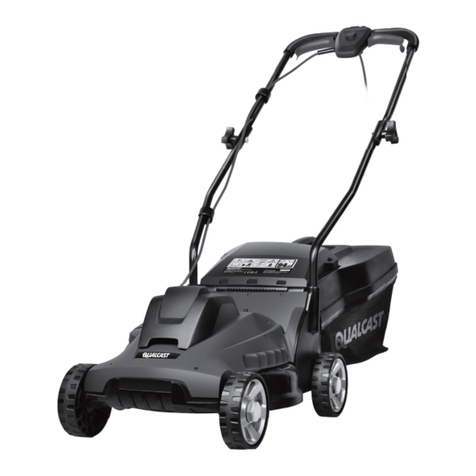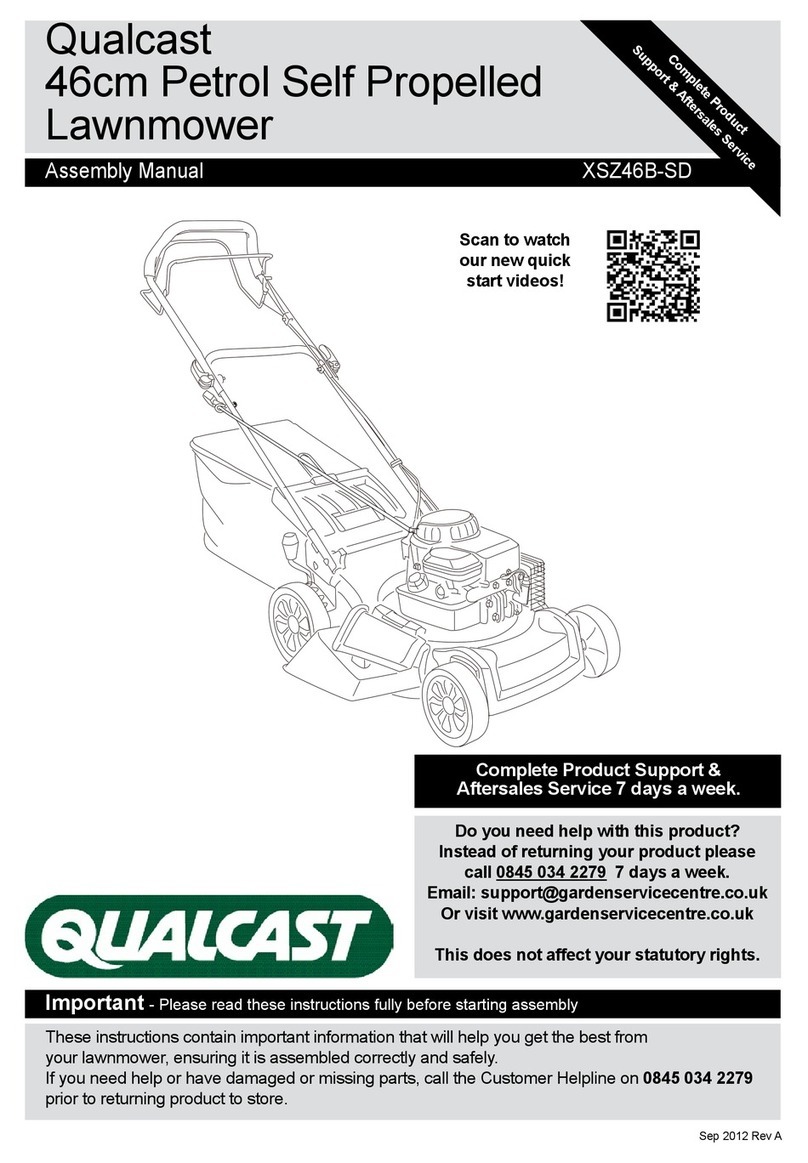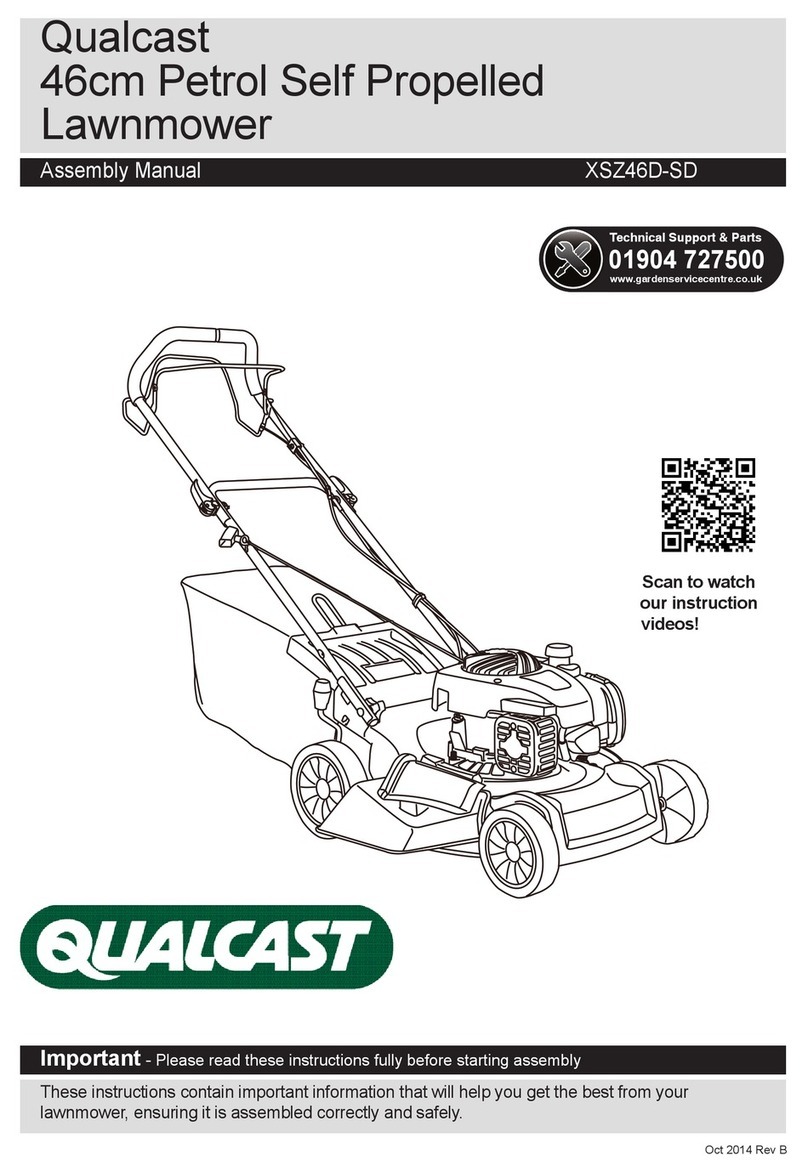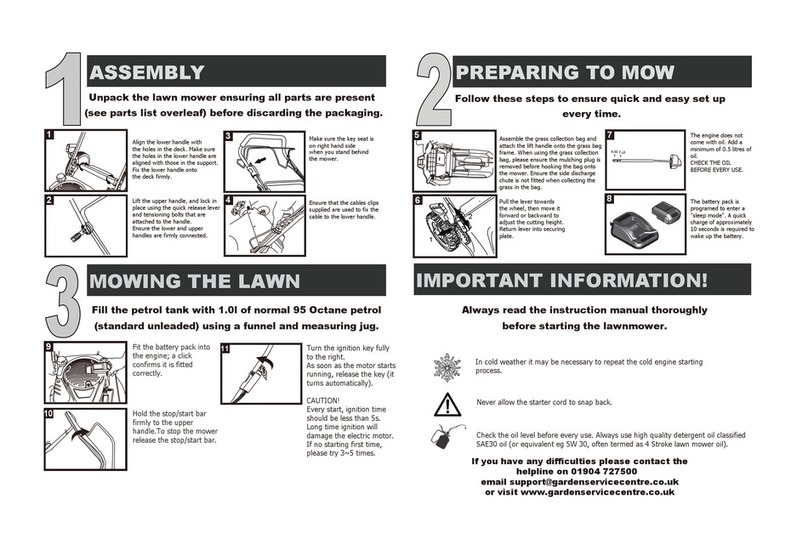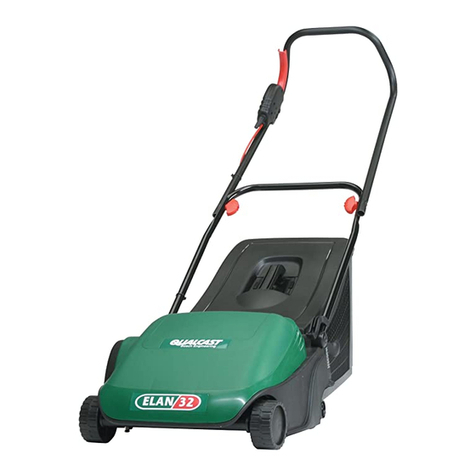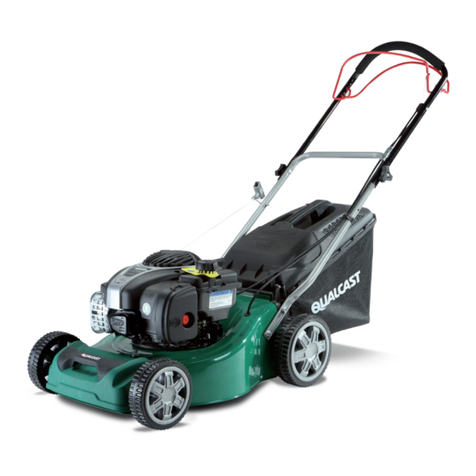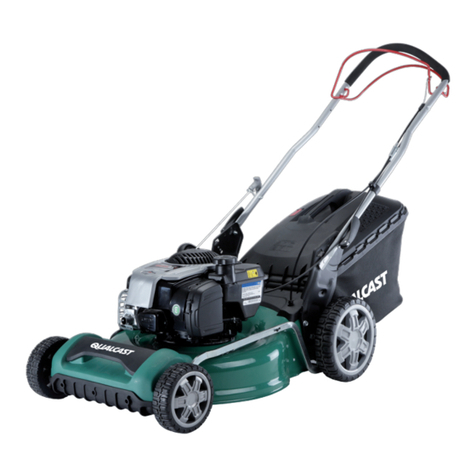
Helpline No. UK 0151 649 1500 / IRE 189 094 6244Helpline No. UK 0151 649 1500 / IRE 189 094 6244
10
3. Proper operation
The petrol lawn mower is intended for private use
i.e. for use in home and gardening environments.
Private use of the lawn mower refers an annual
operating time generally not exceeding that of
50 hours, during which time the machine is
primarily used to maintain small-scale, residential
lawns and home/hobby gardens. Public facilities,
sporting halls, and agricultural/forestry applications
are excluded.
Please note that our equipment has not
been designed for use in commercial, trade
or industrial applications. Our warranty will
be voided if the machine is used in
commercial, trade or industrial businesses
or for equivalent purposes.
The operating instructions as supplied by the
manufacturer must be kept and referred to in
order to ensure that the lawn mower is properly
used and maintained. The instructions contain
valuable information on operating, maintenance
and servicing conditions.
Important! Due to the high risk of bodily injury to
the user, the lawn mower may not be used to trim
bushes, hedges or shrubs, to cut scaling
vegetation, planted roofs, or balcony-grown
grass, to clean (suck up) dirt and debris off
walkways, or to chop up tree or hedge clippings.
Moreover, the lawn mower may not be used as a
power cultivator to level out high areas such as
molehills.
For safety reasons, the lawn mower may not be
used as a drive unit for other work tools or toolkits
of any kind.
4. Technical data
Note: The enclosed manual from Briggs &
Stratton provides detailed technical data
on the engine!
Engine type:
Single cylinder four-stroke engine, 158 ccm
Working speed: 2800 min-1
Fuel: standard petrol
Cutting height adjustment: central, (30-75 mm)
Cutting width: 480 mm
LpA sound pressure level: 85,6 dB(A)
LWA sound power level: 96 dB(A)
Uncertainty measurement: 3dB
Vibration ahw 6,1 m/s2
Uncertainty measurement: 1,5m/s
Weight: (without oil) 38.4 kg
5. Before starting the equipment
5.1 Assembling the components
Some parts of the lawnmower need to be
assembled. For quick and easy assembly, read
and follow the instructions below.
Important! You will need the following additional
tools (not supplied) for assembly, and also for
maintenance work:
• A flat oil drip tray (for changing the oil)
• A 1 litre measuring jug (oil/petrol resistant)
• A petrol can
• A funnel (suitable for the tank’s petrol filler neck)
• Household wipes (to wipe up oil/petrol residue;
dispose of these at a filling station)
• A petrol suction pump (plastic, available from
Einhell UK Ltd - call 0151 649 1500
(IRE 189 094 6244))
• An oil can with hand pump (available from DIY
stores)
Assembly
1. Take the mower and attachment parts out
of the packaging and check that all parts are
present (Fig. 2).
2. Affix the lower push bar (Fig. 3a/Item 5) to
the mower housing and set the desired
working height. 3 different working heights are
available. Each peg on the lower push bar
can be inserted into a hole situated directly
opposite to it, on the mower housing, for
example A-A (Fig. 3). The lower push bar must
be equally adjusted on both sides. Now affix
the cover (Fig. 3a/Item 22) and attach the
push bar (5) using the square head screws (14)
and the star knobs (17) as shown in Figure 3a.
3. Fasten the top push bar to the bottom push
bar using a lever cam screw (Fig. 3b/Item 15)
and a star knob (Fig. 3b/Item 17) on each
side. Make sure that the lobes of the lever
cam screws are folded towards the inside so
that the high speed clamping function
remains operational.
4. Insert the grip of the starter cord (Fig. 3c/
Item 4) into the hook provided for that purpose
as shown in Figure 3c.
5. Fasten the cords to the push bar with the
supplied cable ties (Fig. 3d/Item. 12).
6. Lift the ejector flap (Fig. 4 / Item 7) with one
hand and hook in the grass bag as shown in
Figure 4.
5.2 Setting the cutting height
Important! Adjust the cutting height only when
the engine is switched off and the plug boot
has been pulled.
- Before you begin to mow, check to ensure
that the blade is not blunt and that none of
the fasteners are damaged. To prevent any
imbalance, replace blunt and/or damaged
blades as a set only (if applicable). To carry
out this check, first switch off the engine and
pull the spark plug boot.
- The cutting height is centrally adjusted with
the cutting height adjustor lever (Fig. 7/Item 8).
Up to 5 different cutting heights can be
selected.
